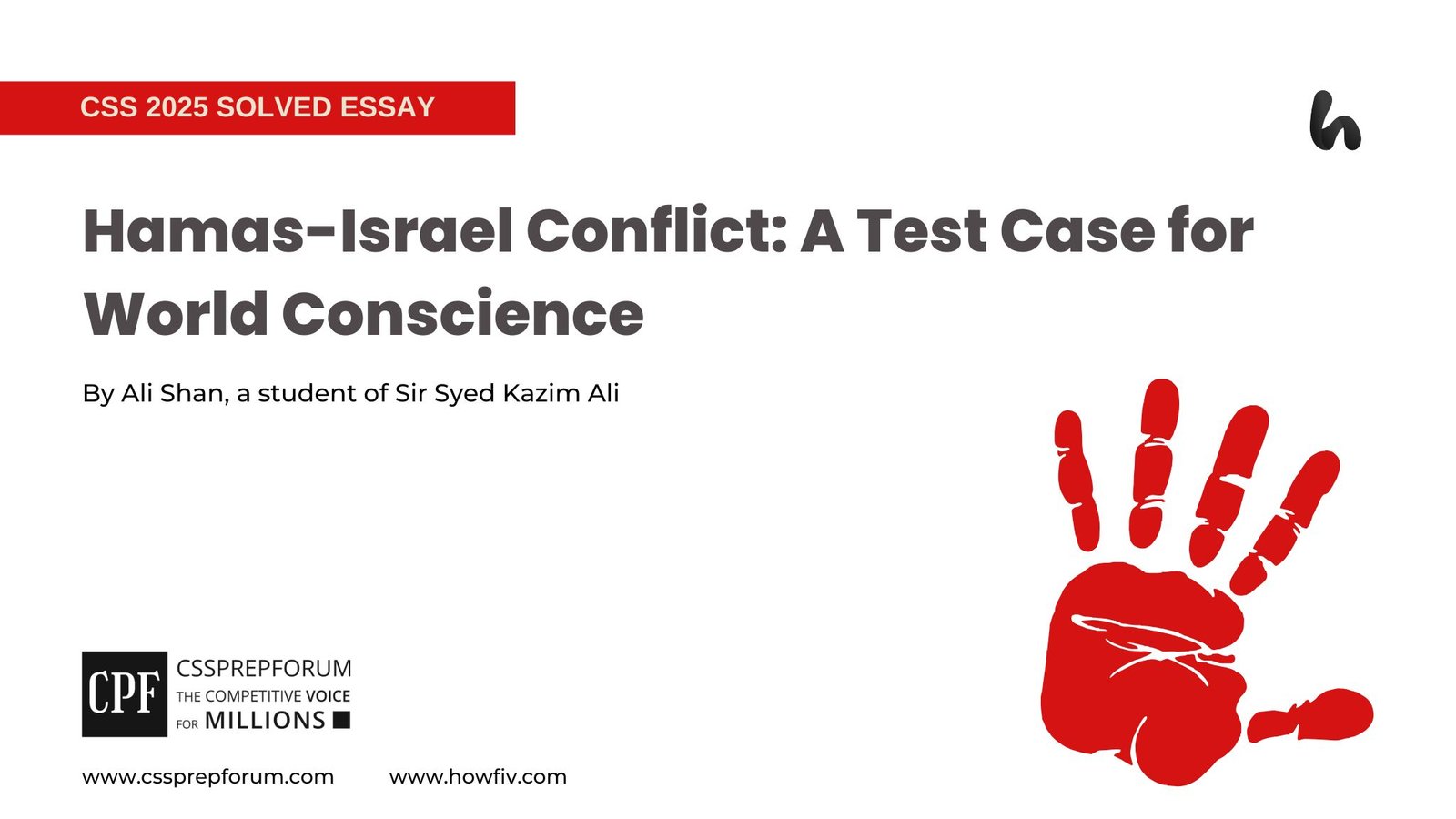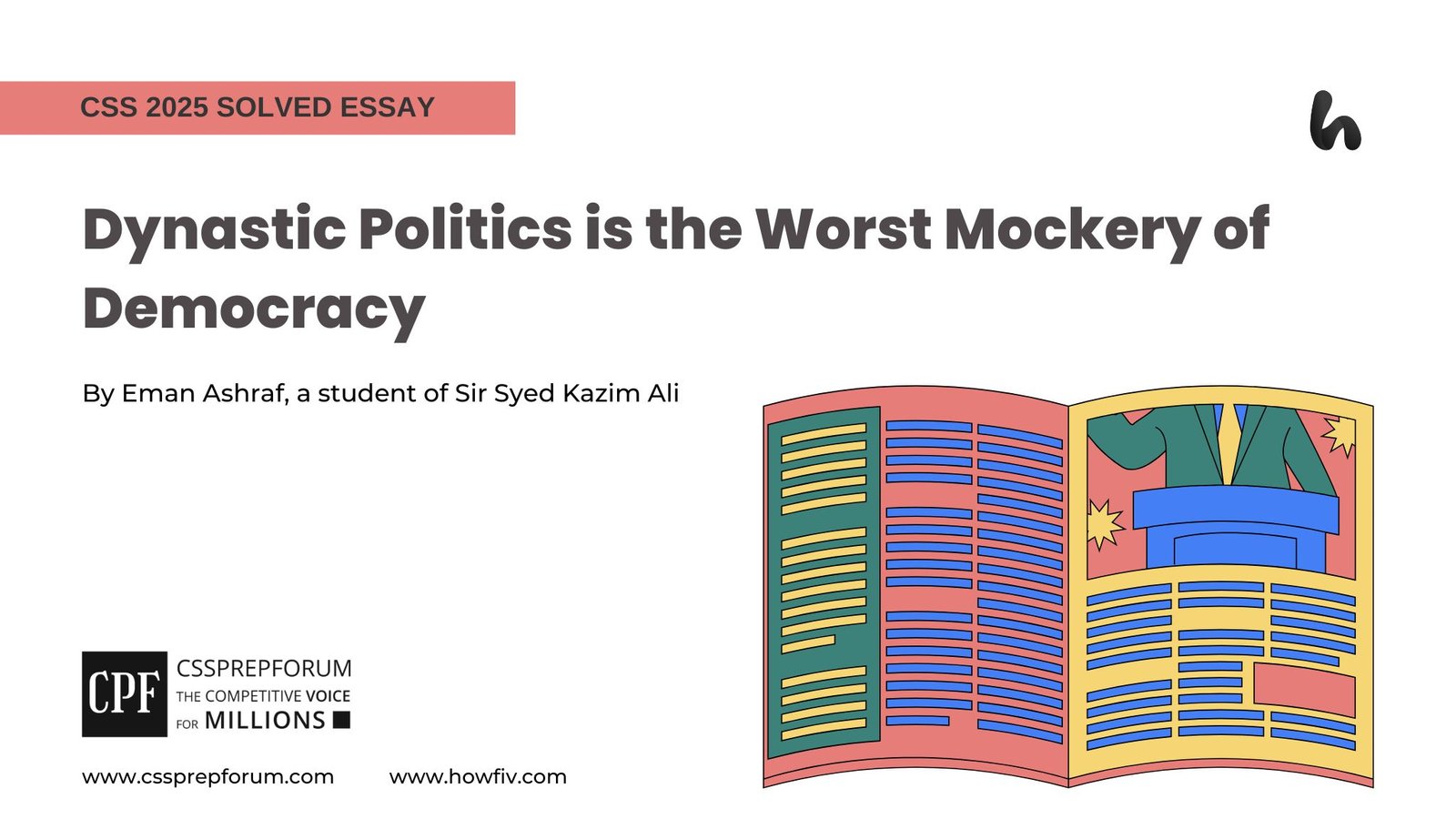CSS Solved Criminology Past Paper CSS Special 2023 | Criminal Investigation Procedure, Criminals, and Crime

Question Breakdown
There are two main things that are to be addressed in the answer: the main features of the criminal investigation procedure and modern methods to investigate criminals directly and indirectly. In this question, the examiner demanded a proper explanation of the criminal investigation procedures. To make one’s paper outstanding, one can add definitions of criminal investigation given by various scholars. Along with the explanation of the main features of criminal investigation procedures, delineating modern methods to investigate criminals directly and crime indirectly is also a crucial component of this question. For a better explanation, one can mention references of various scholars and examples.
Outline
1- Introduction
2- Definition of Criminal Investigation
3- Main Features of the Procedure of Criminal Investigation in Pakistan
- ✓Registration of FIR and Presumption of Innocence
- ✓Inspection of the Site of Crime
- ✓Collection of Evidence
- ✓Asserting of Facts
- ✓Preparing a Recovery Memo
- ✓Identification of Suspects
- ✓Use of Modern Technology
- ✓Filing Charge Sheet
- ✓Interrogation of the Accused
4- Modern Methods to Investigate the Criminals Directly and Crime Indirectly
- ✓Digital Forensics
- ✓Biometric Identification
- ✓Surveillance Systems
- ✓Crime Mapping
- ✓Community Policing
- ✓Understanding Criminal Behaviors
5- Critical Analysis
6- Conclusion

Answer to the Question
Introduction
Criminal investigation did not exist before the 13th century, and only two systems – Justice of Peace and Perish Constable – were introduced by the King of England. These systems were functional until 1829, when Sir Robert Peel introduced the Metropolitan Police System, and the development of acriminal investigation system was envisioned subsequently. Curzon defines criminal investigation as “a legal process which aims at finding out the culprit and collecting evidence”. According to Section 156 to 170 of the Code of Criminal Procedure 1898, the SHO or an officer authorized by the SHO is empowered to conduct an investigation in Pakistan. Moreover, Sections 22A and 22B of the Code of Criminal Procedure 1898 empower additional session judges to maintain peace. If SHO does not register FIR for a cognizable offence, then the complaint can be filed using these two sections. The principles of criminal investigation ensure legitimacy, transparency and moral behaviour amid the process. Furthermore, these key principles help gather detailed information, protect human rights, and ensure justice. According to the Locard exchange principle by Dr. Edward Locard,
“When two objects come into contact, there is always a transfer of material between them. This means that criminals always leave behind some trace evidence at the crime scene and also take away some evidence with them.”
Definition of Criminal Investigation
The term ‘Investigation’ is derived from the Latin words ‘investigatio, investigates and investigatum’, which mean ‘track, footprints, or following the footprints’. Criminal investigation is the close examination of the criminal activity. According to Section 4(L) of the Code of Criminal Procedure 1898 (CrPC), a criminal investigation can be defined as
“All the proceedings conducted by the police officer for the purpose of collection of evidence and digging out the truth.”
“Systemic method of legal and medical inquiry of a criminal activity. Interpreting, documenting, recording, interrogation of evidence and accused.”
The criminal investigation provides a framework for the entire justice process. It is an art as well as a science of finding or digging out the truth in the criminal activities of suspects. This is an effort to examine the facts, circumstances, motives, corpus delicti (body of crime) and modus operandi (method of crime). In addition, Article 18 of Police Order 2002, rules in Chapter 15 of Punjab Police Rules 1934, and High Court rules and orders (Volume 3) delineate the concept of a criminal investigation.
Main Features of the Procedure of Criminal Investigation in Pakistan
According to Chapter 15 of the Punjab Police Rules 1934, a police officer is duty-bound to trace out the facts regarding the commission of a crime. After the crime is committed, the First Information Report (FIR) is registered. The investigating officer reaches the site of crime and starts the criminal investigation process by adhering to certain principles in order to find out the actual culprit.

Registration of FIR and Presumption of Innocence
The First Information Report (FIR) is the primary document to start a criminal investigation. Section 154 of the Code of Criminal Procedure 1898 puts forth that an FIR should be registered after a complaint about a cognizable offence is filed. Cesare Beccaria, also known as the father of legal and administrative criminology, was of the notion that the accused ought to be considered innocent until one is proven guilty by a competent trial court. According to Beccaria, criminology should seek the “greatest good for the greatest number of people”. According to the Sociological and Psychological School of Criminology, there are several underlying and invisible causes of crime; therefore, proper investigation should be done to find the culprit. The classical legal reformists Cesare Beccaria and Jeremy Bentham also denounced self-conclusions while promoting the rights of the accused. Though Pakistan faces several challenges in media coverage, pretrial detention, and impartiality, the presumption of innocence is a fundamental principle of the criminal law of Pakistan, and fair trial is guaranteed via Article 10-A of the 1973 Constitution of Pakistan.
Inspection of the Site of Crime
Reaching the site of crime immediately after the commission of the offence and inspecting it is paramount for an effective investigation process. It involves a thorough examination of the site and locating the evidence, like blood stains, fingerprints, etc. In his work titled “Techniques of Crime Scene Investigation”, Barry A. J. Fisher explains,
“The crime scene is often the most important evidence a criminal investigator has. A good investigator must become proficient at reading the scene and locating the traces left behind.”
Collection of Evidence
Evidence is substantially significant amid the legal proceedings and the trial process as it proves who the offender is. For an impartial and transparent investigation process, proper collection and preservation of evidence are paramount. The methods of collecting evidence have advanced in the contemporary era as they include forensic science in addition to the traditional techniques in Pakistan. For instance, in the case of the sexual assault of Zainab Ansari, DNA analysis was done by the Pakistan Forensic Science Agency (PFSA) in order to reach the culprit. In addition, according to the Express Tribune, PFSA has dealt with thousands of cases; however, justice is often delayed because of insufficient resources.
Asserting of Facts
In order to reach the truth, evidence is analyzed so that logical conclusions can be drawn and suspects can be identified. It helps in understanding and clarifying the chronology of crime and reaching its root causes. The forensic analysis of around 80,000 cases in 2021 assisted Pakistan Forensic Science Agency (PFSA) in asserting facts in order to investigate complex cases of murder and terrorism. According to a report by the Human Rights Commission of Pakistan, testimonies of 30% of offences in rural areas are coerced by influential groups, which impacts the credibility of evidence; therefore, cross-verification is crucial.
Preparing a Recovery Memo
A recovery memo is formal and legal documentation of evidence collected from the site of the crime, which also includes signatures of law enforcement personnel and witnesses involved in the investigation process. In Pakistan, Sections 27 and 103 of the Code of Criminal Procedure 1898 delineate that preparing a recovery memo amid a criminal investigation is crucial for police officers. In Punjab and Sindh, more than 2500 police personnel acquired special training in preparing recovery memos in 2022.
Identification of Suspects
Suspects are identified amid the investigation process with the help of forensic science, surveillance systems and witnesses. Through the identification of suspects, police officers can prevent future crimes and ensure public safety. In Pakistan, this was done in order to prevent terrorist activities and identify terrorist networks like Tehrik-i-Taliban Pakistan (TTP).
Use of Modern Technology
Modern technology and forensic science hold great significance for criminal investigations as they help in the proper collection of information and analysis. For example, in the O.J. Simpson case, the use of DNA helped in highlighting the use of forensic science in criminal investigations. Nevertheless, proper handling, explanation, and analysis of scientific evidence are considerable challenges. According to the Rational Choice Theory by Gary Becker, advanced technology can help in mitigating and deterring crime as it can increase the perceived risk of detection and apprehension.
Filing Charge Sheet
A charge sheet is a document that encompasses details of the crime as well as the accused. It also includes the gist of collected evidence, witness lists and legal provisions which are presented in front of the court. Forensic evidence is essential for filing proper charge sheets, and for this purpose, more than 3000 police officers have acquired special training till 2022. Moreover, the Safe Cities Authority in Punjab has implemented an e-challan system, which resulted in the filing of more than 10,000 charge sheets in 2022.
Interrogation of the Accused
Interrogation is a crucial component of the criminal investigation as it assists in bridging the gap by linking evidence with the motives of the offenders. According to the 1973 Constitution of Pakistan and Code of Criminal Procedure 1898, the rights of the accused are to be protected. However, the country envisions coercion, false confessions and torture amid interrogation. A report by Human Rights Watch unveils that 40% of the accused are pressurized during interrogation, which compromises the impartiality of the criminal investigation.
Modern Methods to Investigate the Criminals Directly and Crime Indirectly
In the contemporary era, modern tactics are used for the direct investigation of criminals as well as the indirect investigation of crimes. These techniques comprise biometric identification, DNA profiling, utilization of cameras and drones, etc., along with the deployment of officers for covert operations. The Punjab Forensic Science Agency (PFSA) of Lahore is a prominent example of the use of advanced forensic techniques, including DNA profiling as well as digital forensics in criminal investigations. Moreover, the Cybercrime Wing of the Federal Investigation Agency (FIA) employs advanced digital forensics to investigate cybercrimes such as harassment, cyberbullying, hacking, etc.

Figure 1: Modern Methods to Investigate the Criminals Directly and Crime Indirectly
Digital Forensics
Digital forensics holds great significance in criminal investigations of the contemporary era for data analysis via digital means and identifying the suspects. In his book titled “Digital Forensics, Investigation, and Response”, C. Easttom accentuates the importance of digital forensics in investigating modern crimes such as cases of terrorism, cybercrime, fraud, etc. In 2022, the Cyber Crime Wing of the Federal Investigative Agency (FIA), Pakistan, received more than one lac complaints of cybercrime, and around 12000 investigations were initiated, resulting in more than 1000 arrests. It was because of digital forensics that these criminals were traced via social media accounts, online footprints, emails, etc.
Biometric Identification
Fingerprint analysis, DNA testing, as well as facial recognition, are the types of biometric technology which assist the investigating officers in reaching the culprit. Biometric identification is crucial in the investigation process, and in Pakistan, the Punjab Forensic Science Agency (PFSA) – an advanced forensic lab – used techniques like DNA testing and fingerprint analysis, etc., to solve around two lac cases from 2020 to 2022. For instance, DNA samples were used to identify the suspect in Motorway Rape Case in 2020.
Surveillance Systems
The investigation process requires surveillance systems along with interrogation techniques. In the contemporary era, electronic surveillance, like CCTV footage, tapping of phones, GPS, etc., is used in order to collect evidence amid the investigation process. M. Schneider, in his work titled “Surveillance, Privacy and Crime”, puts forth,
“The use of surveillance cameras and electronic monitoring in criminal investigations provides law enforcement with real-time data, allowing for quicker apprehension of suspects.”
For example, in order to monitor public places, reach the culprits, and prevent crimes, modern CCTV surveillance systems are used by the Punjab Safe Cities Authority. Due to the installation of more than 9000 CCTV cameras in Lahore, 30% of reduction in criminal activity has been envisioned.
Crime Mapping
It assists the investigation officer in analyzing the history of crime and its root causes and identifying patterns so that resources can be deployed effectively for prediction as well as prevention of future crimes. R. Clarke and J. Eck are of the notion,
“Modern data analytics tools, when applied to crime data, can help predict criminal trends and allow law enforcement agencies to allocate their resources efficiently.”
For example, Geographic Information Systems (GIS) technology is used by Punjab Police for crime mapping which assisted them in mitigating crimes like robbery and burglary up to 15% in 2021.
Community Policing
The significance of cooperation between public and law enforcement agencies is accentuated in community policing, which helps in the considerable reduction of crime. In community policing, community members help the police personnel gather information that helps in the prevention of crime as well as the reduction of the crime rate. Police Public Liaison Committees in Khyber Pakhtunkhwa have minimized the gap between police and the public, which also resulted in the resolution of around 1500 minor criminal cases in 2022 without any formal legal intervention. Community policing not only helps mitigate criminal activities but also enhances the public’s trust and decreases the burden on law enforcement agencies.
Critical Analysis
Various laws of Pakistan, including the Code of Criminal Procedure 1898 (CrPC) and the 1973 Constitution, explain the procedures and requirements of criminal investigation. Nevertheless, the process is flawed and defective in Pakistan due to the lack of training and professionalism of the investigating officers. Furthermore, biasness, fake encounters, extrajudicial killings, planted evidence, forceful confession and torture are common problems of criminal investigation in Pakistan. Due to this, the rights of the accused as well as victims are violated in Pakistan because the process is prone to corruption. This has resulted in the dark figures of crime as well as the trust deficit among people.
Conclusion
In a nutshell, criminal investigations take a thorough strategy, which includes securing crime scenes, gathering and preserving evidence, questioning suspects and conducting interviews, carrying out forensic examinations and compiling documentation. The efficacy of investigations has been markedly improved by modern techniques, with technological developments in data analytics, digital forensics and biometrics being especially important. Nonetheless, the criminal investigation process faces several challenges in developing countries like Pakistan amid its conduct due to outdated frameworks and lack of professionalism of investigating officers. Despite obstacles, the effectiveness of criminal investigations in Pakistan has increased with the use of modern forensic science and digital investigation tools. Sustaining the investigative procedures will require ongoing investments in technology, training and engagement with the community. Edward Blacke is of the notion that
“Criminal investigation is nothing but a guessing game.”

CSS Solved Past Papers’ Essays
Looking for the last ten years of CSS and PMS Solved Essays and want to know how Sir Kazim’s students write and score the highest marks in the essays’ papers? Then, click on the CSS Solved Essays to start reading them.
CSS Solved Essays
CSS Solved General Science & Ability Past Papers
Want to read the last ten years’ General Science & Ability Solved Past Papers to learn how to attempt them and to score high? Let’s click on the link below to read them all freely. All past papers have been solved by Miss Iqra Ali & Dr Nishat Baloch, Pakistan’s top CSS GSA coach having the highest score of their students. General Science & Ability Solved Past Papers











